Within the scenic expanse of Yellowstone National Park, Mammoth Hot Springs stands out as an exceptional display of nature's brilliance.
Renowned as the largest carbonate-depositing spring in the United States, its vivid terraces offer a continually changing panorama that captivates the senses.
Mammoth Hot Springs's timeless and ever-changing beauty invites visitors to pause and appreciate its natural splendor. As we share the story of this remarkable site, we invite you to immerse yourself in the quiet allure of its landscapes.
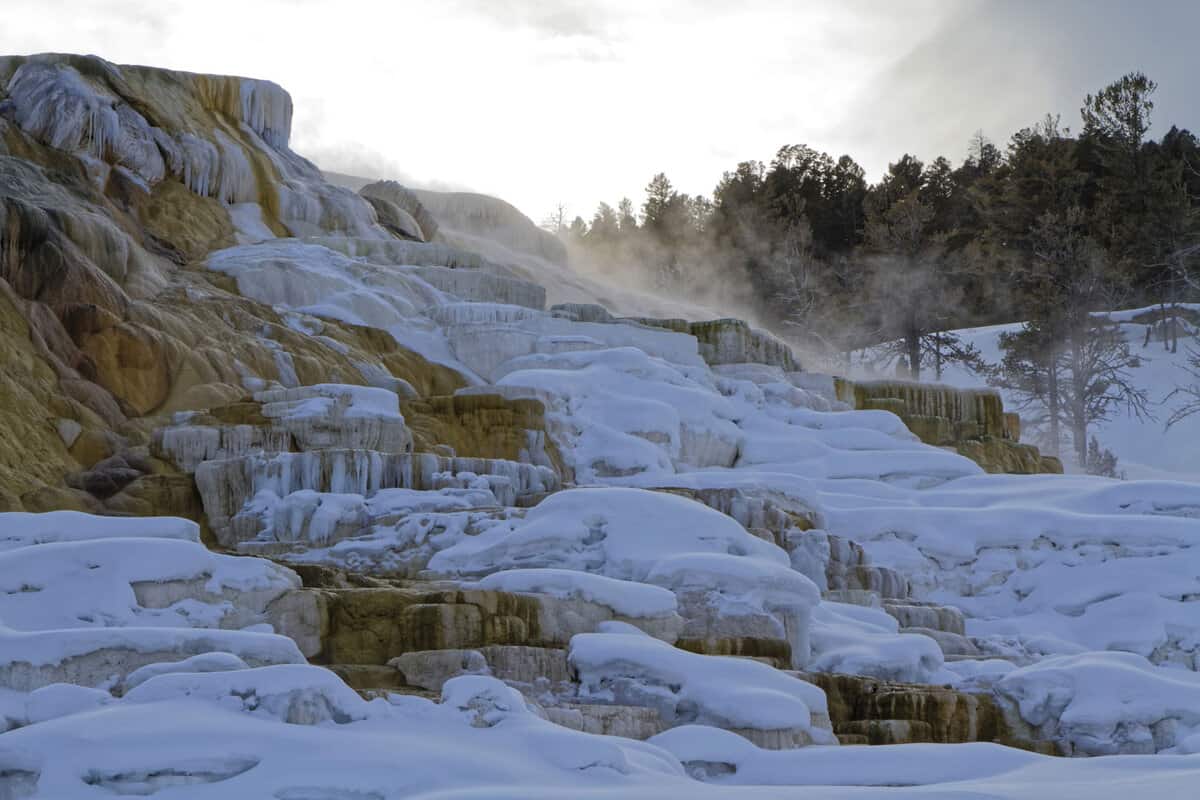
Geological Formation of Mammoth Hot Springs
Before we cover the wonders of Mammoth Hot Springs, pause for a moment and soak in its splendor through the video below.
@princesspcc Exploring the mesmerizing terraces of Mammoth Hot Springs 🦣🦣 | บ่อน้ำพุร้อนแมมมอธ ส่วนหนึ่งของอุทยานแรกของโลก Yellowstone National Park #yellowstone #yellowstonenationalpark #mammothhotsprings #hotsprings #wyoming #ท่องเที่ยวอเมริกา #tiktokท่องเที่ยว #ทริปเที่ยว #traveltiktok #vacation ♬ Somewhere Only We Know - Gustixa
Isn't it amazing? It's like a natural stairway to heaven.
Beneath the surface of Yellowstone National Park, a hotbed of geothermal activity, lies the foundation for the awe-inspiring Mammoth Hot Springs.
Over millions of years, a complex interplay of hydrothermal processes and unique geological formations has given rise to this captivating spectacle.
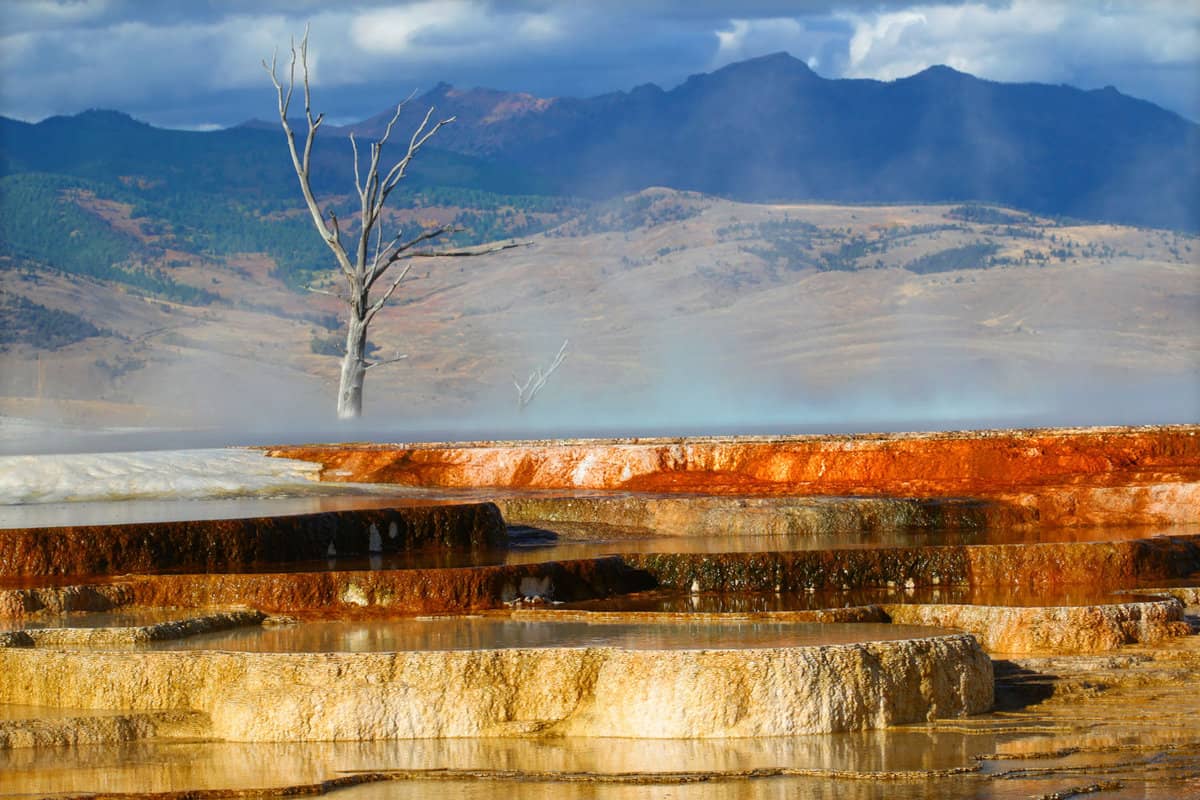
But did you know that the hot springs are also connected to the supervolcano beneath Yellowstone?
The immense heat and pressure from the volcanic activity contribute to the formation and flow of the springs, making them an integral part of the park's geological tapestry.
The Unique Features Of Mammoth Hot Springs
Discover the captivating features of Mammoth Hot Springs in Yellowstone National Park, which set it apart from other regional thermal areas. The terraces at Mammoth Hot Springs offer a mesmerizing sight, drawing visitors into vibrant colors and intricate patterns.
So, what creates these stunning formations? The process begins with hot water that is rich in dissolved calcium carbonate.
When this hot water interacts with the cool air, it leads to the deposition of travertine, a type of limestone.
This unique combination of factors results in the ever-changing terraces that fill the landscape with a spectacle of natural artistry.
But what makes Mammoth Hot Springs genuinely remarkable is the rapid growth of these formations.
Unlike other sinter formations in the area, the limestone at Mammoth Hot Springs is relatively soft, allowing the travertine formations to grow faster. This growth has been likened to a cave turned inside out, adding to the site's allure.
The deposition of travertine as the terraces of Mammoth Hot Springs creates a unique and awe-inspiring landscape.
The hot springs continue to flow and evolve each year, ensuring that the terraces are constantly changing, providing visitors with an ever-shifting display of natural artistry.
When exploring Mammoth Hot Springs, take the time to marvel at the remarkable growth of the formations due to the soft limestone and appreciate the intricate geological processes that shape this captivating thermal feature in Yellowstone National Park.
The Significance of Carbonate Deposition at Mammoth Hot Springs
Mammoth Hot Springs is of immense importance due to the process of carbonate deposition that occurs there. As the largest carbonate-depositing spring in the U.S., it holds a unique place in the natural world.
Carbonate deposition creates habitats that support diverse microbial life, forming delicate ecosystems thriving in the steaming waters.
These ecosystems demonstrate life's interconnectedness and organisms' adaptability in extreme environments. The process also shapes the visually captivating terrace structures of Mammoth Hot Springs.
Deposited millions of years ago, limestone combines with hot water rich in dissolved carbon dioxide to create a weak carbonic acid solution.
As this solution rises through the rock, it dissolves calcium carbonate and deposits it as travertine, forming the terraces. Mammoth Hot Springs' historical significance includes Indigenous peoples' use of its minerals for white paint.
The site's volcanic heat source remains a subject of scientific inquiry, with possibilities including a large magma chamber or a smaller heat source closer to Mammoth.
Mammoth Hot Springs showcases the importance of carbonate deposition, supporting diverse ecosystems and creating visually stunning terraces. Its historical and geological significance adds to its allure as a natural wonder.
The Historical and Cultural Significance Of Mammoth Hot Springs
In addition to its awe-inspiring geological wonders, Mammoth Hot Springs carries a profound historical and cultural heritage. This extraordinary site has been captivating explorers and visitors for countless centuries.
Unbeknownst to many, Native American tribes, including the Shoshone and Bannock, revered the hot springs as sacred and believed in their remarkable healing properties.
The springs held immense spiritual significance for these tribes, leaving a lasting imprint on their cultural traditions.
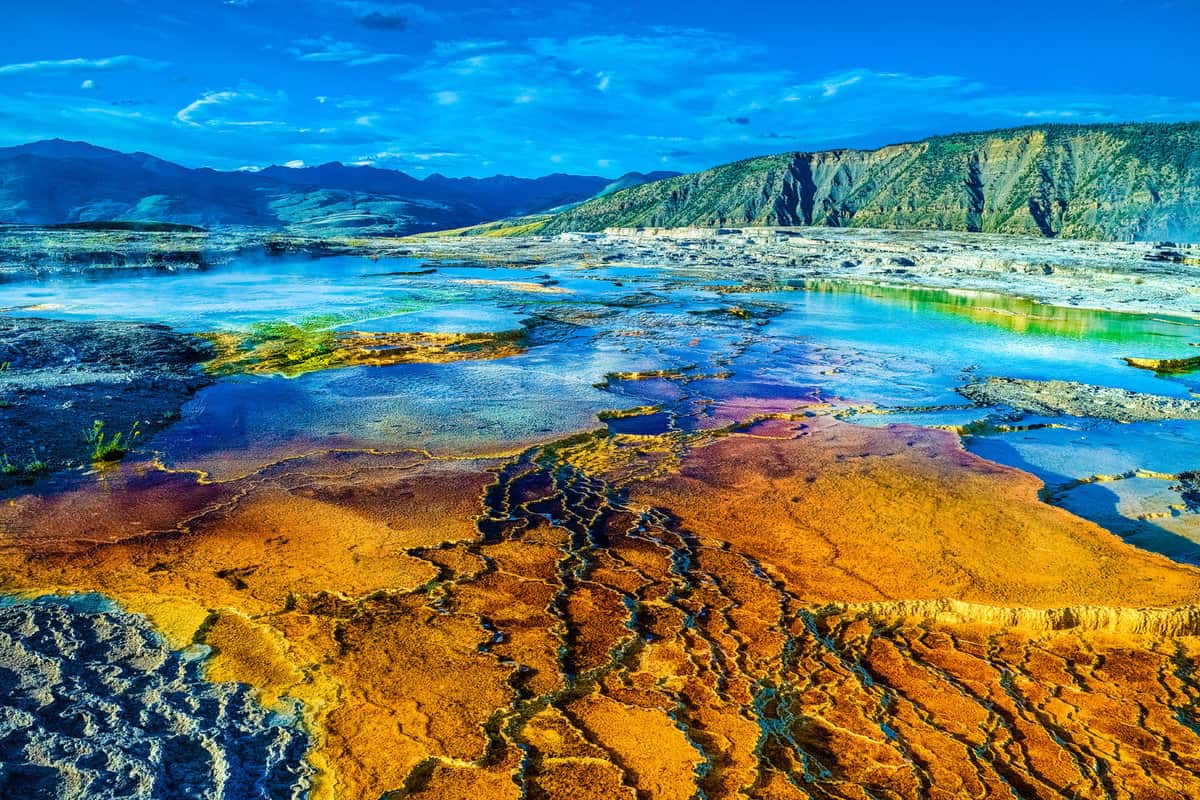
Today, Mammoth Hot Springs has evolved into an iconic symbol of Yellowstone National Park, drawing visitors from around the globe.
Its significance extends beyond its geological marvels, encompassing a rich historical and cultural legacy that inspires and captivates individuals from diverse backgrounds.
It is a place where the past converges with the present, offering a glimpse into the enduring allure and cultural significance of this remarkable destination within Yellowstone National Park.
Preservation and Conservation Efforts
Preserving the delicate balance of Mammoth Hot Springs presents an ongoing challenge.
The National Park Service and various conservation organizations have implemented measures to protect this natural wonder.
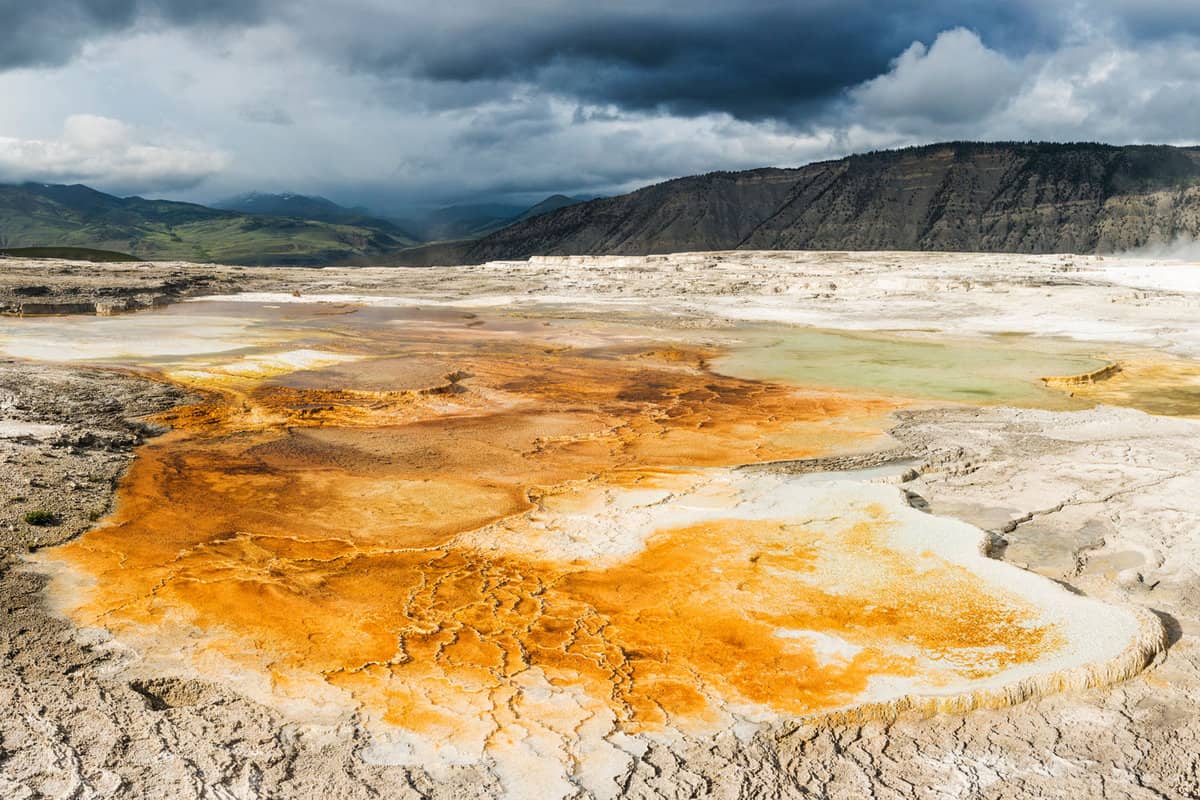
Extensive research and monitoring initiatives aid in understanding the springs' ecological dynamics, ensuring their preservation for future generations.
By practicing responsible tourism and adhering to park regulations, visitors contribute to preserving this remarkable site.
Additionally, ongoing efforts are being made to educate visitors about the importance of conservation and the fragility of the ecosystems supported by the hot springs.
Accommodation Options near Mammoth Hot Springs:
Within Yellowstone's Mammoth Hot Springs, you'll find one hotel and two campgrounds to suit your preference.
Consider the Mammoth Hot Springs Hotel and Cabins if you want to stay within the park.
This historic hotel underwent a remarkable renovation in 2019 and now seamlessly blends the classic charm of the early 1900s with modern amenities.
Due to its popularity, making reservations 13 months in advance when they open is advisable. Remember that this is the only hotel in the Mammoth area, so securing your booking early is crucial.
For those who prefer camping, the Mammoth Hot Springs Campground is the only campground within Mammoth Hot Springs and the only campground in Yellowstone that remains open year-round.
The campground provides picnic tables, fire rings, and shaded spots under Douglas and Juniper trees. Another option is the Indian Creek Campground, located approximately 8 miles south of Mammoth Hot Springs.
This primitive campground offers a more secluded experience and is generally less crowded than Mammoth Hot Springs Campground. It operates on a first-come, first-served basis and is open from mid-June to early September.
If you prefer more amenities and more comprehensive accommodation options, consider staying in Gardiner, Montana, conveniently near Mammoth Hot Springs.
Gardiner offers a variety of hotels, motels, cabins, and vacation rentals to suit different budgets and preferences.
Getting to Mammoth Hot Springs: Location and Nearby Points of Interest:
Mammoth Hot Springs is in the northwest corner of Yellowstone's northern loop.
It's a 20-minute drive south of Gardiner, Montana, and only five minutes south of the north gate. If you're flying into Bozeman Airport, expect a two-hour journey to Mammoth Hot Springs.
Alternatively, if you're entering the park from the town of West Yellowstone, it's approximately 40 miles away, taking around an hour and a half to reach your destination.
Elevation in Mammoth Hot Springs is 6,735 feet (1,943 meters), so be prepared for the high altitude.
Nearby, you'll find various points of interest that are worth exploring. Bunsen Peak Trail, Golden Gate Bridge, Undine Falls, and Sheepeater Cliff are just a few examples of the attractions within a short distance.
For significant points of interest, visit the awe-inspiring Grand Canyon of Yellowstone, 33 miles away, and the famous Old Faithful Geyser Basin, 51 miles from Mammoth Hot Springs.
Things to Do in Mammoth Hot Springs: Natural Marvels and Historic Sites
Mammoth Hot Springs Terraces
You will be amazed by the travertine terraces, among the largest and most impressive in the world. These terraces are divided into two sections: the upper and lower terraces.
The upper terrace offers a short driving loop that takes around 30 minutes to complete. Along the way, you'll find several pullovers where you can step out of your car and get a closer look at the mesmerizing features.
Don't miss the Orange Spring Mound, the Aphrodite Terrace, and the Angel Terrace, among other highlights.
The lower terrace, on the other hand, features a boardwalk hiking path that stretches for 1.75 miles (2.8 kilometers). Walking along this path, you'll encounter remarkable attractions such as Mound Spring and Jupiter Terrace, Minerva Terrace, and the Liberty Cap.
You can walk from the upper terrace to the lower terrace, but several hundred stairs exist.
The Mammoth Historic Fort and Albright Visitor Center
Take a step back by visiting the Mammoth Historic Fort, initially constructed by the United States Army in 1909 as officers' quarters.
Today, the historic fort houses the Albright Visitor Center. Inside, you can explore exhibits, shop for souvenirs, speak with knowledgeable park rangers, and plan your itinerary for a memorable visit.
Grab a Bite to Eat
If you are hungry during your visit, Mammoth offers several dine-in restaurants where you can take a break from the elements and indulge in a delicious meal.
Additionally, there's a general shop where you can pick up snacks for a picnic on the grass. Check out the Mammoth Hotel Dining Room, Grant Village Cafeteria, Mammoth Terrace Grille, and The Map Room for various dining options.
Tips for Visiting Mammoth Hot Springs
Crowds: Mammoth Hot Springs can get crowded, especially during the peak summer season. To ensure a more enjoyable experience, visit early in the morning or later in the afternoon when the crowds are typically smaller.
Weather: The weather in Mammoth Hot Springs can be unpredictable, so it's advisable to dress in layers and be prepared for changing conditions.
Even during summer, temperatures can drop significantly, especially in the evenings. It's also worth noting that the area receives significant snowfall during the winter, so plan accordingly if you're visiting during that time.
Wildlife: Yellowstone National Park is known for its diverse wildlife, including elk, bison, and bears.
While exploring Mammoth Hot Springs, keep a safe distance from any wild animals you encounter and follow all park regulations regarding wildlife viewing.
Stay on designated paths: To protect the delicate formations and ecosystem of the terraces, it's essential to stay on the designated paths and boardwalks.
Walking on the terraces themselves can cause damage and disrupt the natural processes.
Photography: Mammoth Hot Springs offers incredible photo opportunities, so bring your camera or smartphone.
Capture the intricate details of the terraces, the vibrant colors, and the surrounding natural beauty.
By following these tips and exploring the natural marvels and historic sites of Mammoth Hot Springs, you will have a memorable and enjoyable visit to this unique destination within Yellowstone National Park.
Experience the Marvel of Mammoth Hot Springs
Mammoth Hot Springs continues to awe and inspire all who venture into its captivating embrace.
With its vibrant terraces and ever-changing landscapes, it serves as a reminder of the remarkable forces that shape our planet.
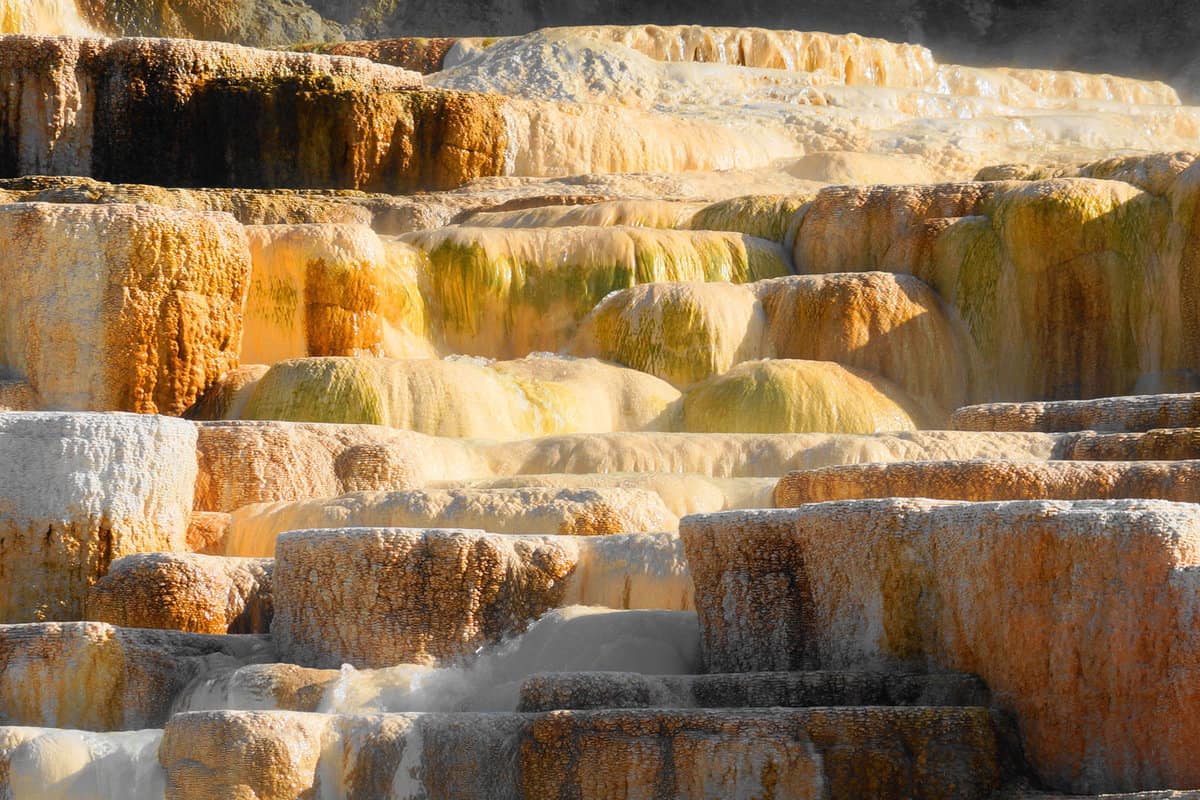
So, come and explore this spectacular carbonate wonder and experience the magic of Mammoth Hot Springs firsthand.
Let its enchantment leave an indelible imprint on your soul, igniting a deep appreciation for the majesty and fragility of our natural world.
In contrast to Yellowstone's renowned hot springs, Florida boasts an array of crystal-clear cold springs that are not to be missed. Here are some highlights:
Silver Springs State Park: Crystal Clear Water And… Monkeys!
Homosassa Springs: The Florida State Park That Has a Hippo!
